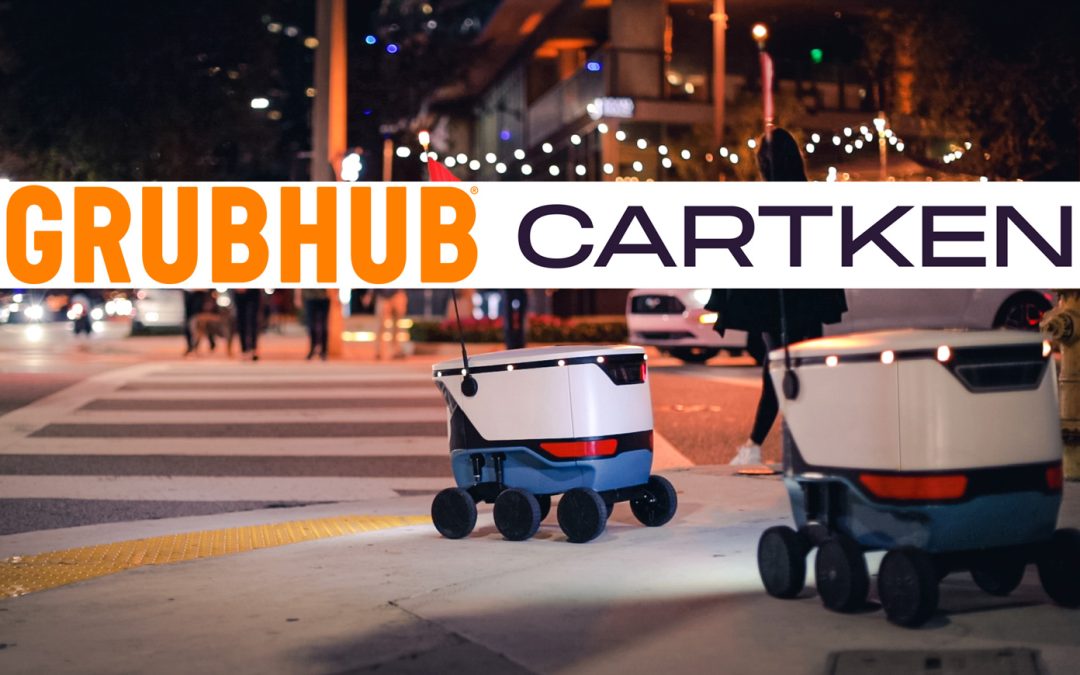After a successful test of a robotic delivery partnership at Ohio State University, third-party delivery operator Grubhub and robotic delivery startup Cartken are ready to expand to campuses across the country.
Grubhub, which is already partnered with more than 250 campuses across the country, sees robotics as a way to get even closer to students
“Robot delivery is exciting for students and helps provide even better service and innovative solutions to our campus partners,” said Eric Harper, senior director of campus environments at Grubhub.
He said he expects to roll out robotic delivery at other campuses over the coming months, but there were no official announcements of which campuses would be next.
When asked about what gave him confidence in the initial pilot at Ohio State, Harper said it was all about the experience. Using robots on campus is a better experience, cars and even non-students can have significant difficulties in such areas.
“The diner experience is the most important measurement we track against, and the teams were focused on usage and adoption, average delivery time, order cancellation percentages, and contacts into customer care, amongst others,” said Harper. “From Grubhub’s perspective, this type of delivery is appealing for college campus environments since they are notoriously difficult for cars to navigate (lots of one-ways, can’t get into dorms, etc.) Logistically, it solves a unique need, and still has the same end result which is supporting local and on-campus restaurants and getting students fed.”
For on-campus foodservice operators large and small, the experience isn’t that much different than handing off a delivery to a human delivery person.
“Operators manually load the orders into the robot and close it, and the packaging process is the same as any other delivery order. To put the food into the robot, the food service providers walk the order to the designated loading area (just a few feet away) before sending it off for delivery,” said Harper.
Students seem to love the bots, they post pictures of themselves with their automated delivery helpers, and they also order a lot more. Harper said at Ohio State, students ordered delivery via robots twice as much than traditional Grubhub delivery, even when both were integrated into the student dining program.
Cartken, like many of the robotic delivery players out there, uses AI and camera navigation to map and deliver food. If a bot gets lost or runs into a blocked path, operation is sent to a human operator.
Cartken’s robots navigate pavements, crosswalks and pedestrian paths within the campus area without human guidance. The robots use Cartken’s artificial intelligence (AI) and camera-based navigation and mapping technology, which the company developed for small autonomous vehicles to safely operate around pedestrians.
Christian Bersch, CEO and one of four co-founders, said it’s a great partnership for the company, which was founded in 2019.
“This collaboration perfectly aligns with our mission to use robotics and AI technology to provide friction-free and environmentally sustainable delivery, and have robots serve the community,” said Bersch. “We are excited to scale alongside Grubhub and offer robot delivery to students on campuses across the country.”
For the campus, the robots tick a lot of boxes: students love them and it’s a more sustainable and faster delivery experience.
“We are excited about the return of robots to campus, and we have been testing the Cartken robots during the spring semester with the same vision to lower the cost of delivery, reduce the time it takes to deliver food and enhance sustainability,” said Zia Ahmed, senior director of Student Life Dining Services at Ohio State University.


